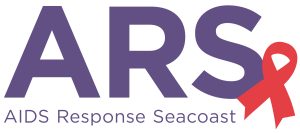- What’s the difference between HIV and AIDS?
HIV stands for Human Immunodeficiency Virus. Once inside your body, HIV slowly destroys the immune system over time, eventually resulting in a medical condition known as AIDS, or Acquired Immune Deficiency Syndrome. People with AIDS are vulnerable to a wide range of infections that, while relatively harmless in people with healthy immune systems, can become life threatening.
- Where did HIV come from?
HIV is believed to be a mutation of a virus that affects monkeys and chimps. The most likely means by which this virus, known as Simian Immunodeficiency Virus, was transmitted to humans, is via contact with the blood of chimps that are hunted for their meat. It is believed that the blood of one or more infected animals was introduced into the human population through contact with open cuts or sores, was able to survive, and eventually mutated into what we now know as HIV.
- How is HIV spread?
HIV is spread through direct contact with infectious body fluids, of which there are four: blood, semen, breast milk and vaginal secretions. Because these are the only four fluids that can transmit HIV, any activities that put a person in direct contact with any of these fluids can also put that person at risk for HIV.Such activities include unprotected sexual activity, whether oral, anal, or vaginal; sharing needles for ANY purpose, including tattooing and piercing; sharing equipment used for snorting drugs; and sharing personal care items (toothbrushes, razors, manicure equipment, etc.) that may be tainted with blood.
- What’s the risk of unprotected oral sex?
While unprotected oral sex is very low risk for HIV, there have been documented cases of oral transmission. To keep the risk to a minimum, it’s important for people engaging in this activity to avoid getting sexual fluids in their mouth. The best way to do this is by using barrier protection such as condoms and dental dams.This is especially a good idea due to the fact that while unprotected oral sex is very low-risk for HIV, it is not low-risk for other STDs such as syphilis, Chlamydia and gonorrhea. These and other STDs can infect via the back of the throat, where they may be less likely to be detected.
- If both partners are HIV-positive, do they still have to take precautions?
It is important for people with HIV to continue taking precautions to avoid transmission even if their partners are also HIV-positive. This is because of the possibility of being co-infected with another STD , or re-infected with HIV that may be resistant to one or more of the medications used to treat HIV.
- How does HIV kill people?
HIV kills by slowly destroying the immune system, eventually leaving people with no means of fighting off infection. Once the immune system is destroyed, the person is vulnerable to a wide range of infections that are caused by organisms that are relatively harmless to people with healthy immune systems, but which can be fatal to people with HIV.These infections are called “opportunistic infections,” because they are only able to do harm after HIV provides an opportunity for them to do so. Being diagnosed with an opportunistic infection is one way for an HIV-positive individual to be diagnosed as having AIDS.
- Can someone with HIV have children?
It is possible for HIV-positive men and women to have healthy children. For men, there is a process called sperm washing, by which sperm cells are removed from the seminal fluid and processed for artificial insemination. This process was designed as a safe method for HIV-positive men to have children without infecting their partners.For women, HIV medications are administered throughout the pregnancy, and natural childbirth is abandoned in favor of delivery by C-section as the safest option for the baby. Because breast milk is fluid that will transmit HIV, women with HIV are advised against breast feeding and encouraged to bottle-feed their babies with infant formula.
In addition, because it is not uncommon for babies to initially test positive for HIV antibodies, periodic HIV-testing is advised during the baby’s first year of life.
- Where can I get clean needles?
Massachusetts and New Hampshire both have laws allowing the sale of syringes over the counter without a prescription to anyone aged 18 or older. New Hampshire law does not require pharmacies to sell syringes without a prescription, instead allowing individual pharmacies the right to decide for themselves whether or not to do so. Because of this, it is advisable for New Hampshire residents to first check with their local pharmacies to determine their policy on the sale of syringes.
In addition, there are Needle Exchange Programs (NEPs) in Massachusetts, Maine and Vermont. NEPs will not only provide clean, sterile syringes free of charge, they will also dispose of any used syringes turned in to them. All of their services are free and confidential. To find the NEP nearest you, log onto any of the web sites below, and do a site search using “needle exchange programs” as keywords.
Used syringes should be packaged for disposal by placing them in a puncture- proof container such as a plastic laundry detergent container. Once the container is full, screw the cap back on, seal it with tape, and write “biohazard” on the container using a permanent marker. Because of the potential risk to trash collectors and others, used syringes must not be disposed of in regular household trash. Instead, they must be disposed of at a drop site such as a needle exchange program, a hospital or another appropriate medical facility
- How effective are condoms at preventing the spread of HIV?
When used correctly and consistently, condoms provide excellent protection against HIV during sexual activity. While abstaining from sexual activity and drug use is the only guaranteed means of avoiding HIV and other STDs, correct and consistent condom use is the next best thing for protection during sexual activity.For the best protection, it’s important to use only an unexpired latex or polyurethane condom, as “natural skin” condoms do not protect against HIV. If using a latex condom, it’s also important to use only water-based or silicone lubricants, as oil-based lubricants can cause latex condoms to break. For more information about correct condom use, contact any member of our Prevention staff.
- How effective are the medications used to treat HIV?
When taken exactly as prescribed, HIV medications are very effective in most cases. However, many people report a wide range of side effects, which are mild in some cases and very severe in others.They are also very expensive, and although most insurance plans will pay for them, those without insurance are often unable to afford them without some form of assistance such as Medicare, Medicaid or the AIDS Drug Assistance Program, all of which are difficult to qualify for.
Another problem is the fact that HIV is becoming increasingly resistant to many of the medications that are currently available to treat it. Due to cost, resistance, or side effects, many people with HIV are unable to use the medications. Because of this, and in the absence of a vaccine or a cure, the best course of action is to avoid getting HIV altogether.
- How many people in the United States have HIV?
According to the Center for Disease Control, over one million people in the United States have been diagnosed with HIV since the start of the epidemic. The CDC also estimates that 25% to 27% of people with HIV remain undiagnosed, so the actual number of infections is estimated to be much higher, possibly in the 1,125,000 range.
- How widespread is HIV in New Hampshire?
According to surveillance data compiled by the New Hampshire Department of Health and Human Services, just under 1,700 people in New Hampshire have been diagnosed with HIV/AIDS since the start of the epidemic. When the estimated number of undiagnosed infections is added in, the number is estimated to be approximately 2,100.
- In any given sexual encounter, are both partners equally at risk?
Although both partners face some level of risk in any given sexual encounter, the risk is greater for the partner being penetrated than it is for the insertive partner. This is due in part to the likelihood of internal trauma to the partner being penetrated, which can provide an entry point for HIV if the insertive partner has it.
- Can I get HIV from a mosquito bite?
There have been no documented cases of HIV being transmitted by a mosquito bite. It is believed that even if a mosquito bites someone with HIV, the virus does not survive long enough inside the mosquito’s digestive tract to be a risk to the next person bitten. It is also believed that if HIV could be transmitted by mosquitoes, the number of infections would be much higher.
- Don’t only gay men and injection drug users get HIV?
Because gay men and injection drug users were among the first to be infected at the start of the epidemic, they were infected in large numbers before the virus began showing up in other groups. As a result, there was an early misperception that only gay men and injection drug users could get HIV.We now know that anyone can get HIV, and that all people are at risk based on their behaviors rather than membership in any one group.
Behaviors that put people at risk are unprotected sexual activity (whether oral, anal, or vaginal), sharing needles for any purpose (whether injecting, piercing or tattooing), and sharing equipment used to snort drugs. It is also possible for an HIV-positive woman to pass the virus on to her baby during pregnancy, childbirth, or through breast feeding.
- How can I completely avoid getting HIV altogether?
The only way to completely eliminate the risk of infection is to not be sexually active and to not do drugs. This is what is known as abstinence. For those who are unwilling or unable to commit to abstinence, knowing how to reduce the risk from sexual activity or drug use behaviors becomes vitally important.Reducing the risk from sexual activity involves using barrier protection such as condoms and dental dams for each act of oral, anal or vaginal sex. Reducing the risk from drug use behaviors involves not sharing drug-using equipment such as syringes (or anything else used for injecting, such as cotton balls, cookers, rinse water, etc.) and snorting equipment.
- What are the symptoms of HIV?
Early symptoms of HIV infection generally occur within the first 2 to 4 weeks after infection as the body mounts an immune response. During this time, the virus reproduces unchecked, and so a person has more virus in their system than at any other time.This results in symptoms that often mimic the flu: low-grade fever, nausea, vomiting, diarrhea, headache, aches and pains in the muscles and joints, etc.
It’s important to know that during this time, because of the amount of virus in the person’s system, that person is also more infectious to others than at any other stage in the infection. These symptoms eventually subside as the body begins to regulate the virus, and the person may not have any other noticeable symptoms for as much as ten years.
At that point, the person may experience symptoms that are commonly associated with a range of infections that are associated with AIDS.
- I’m in a committed monogamous relationship. Do we still need to use condoms?
People who are in a committed, monogamous relationship (i.e. who have no other sexual partners) may safely abandon condom use provided they adhere to the following guidelines from the Centers for Disease Control: Once the decision has been made to abandon condom use, both partners should be tested for HIV as soon as possible.Assuming both partners test negative, they should be tested again after three months and again after six months. If both partners test negative up through the six-month test, and assuming that neither has done anything that might put them at risk of infection, it is then safe to abandon condom use.
From that point on, if either partner has any sexual partners outside the relationship, it is important to use condoms with any outside partners to avoid becoming infected and passing it on to their primary partner.
- I’m allergic to latex, but I don’t want to get HIV. What do I do?
Polyurethane condoms are a great alternative for people with latex allergies. In addition, they allow for better sensation and are not damaged by oil-based lubricants. Some commonly available poly condoms are the Avanti, which is made by Durex, and the Supra, which is made by Trojan.The female condom is also made out of polyurethane, and is a great alternative for the partner being penetrated to take control of their own safety. Samples of all of the above condoms are available for free at AIDS Response Seacoast.
Although natural skin condoms are also available as an alternative to latex, they are not at all effective in preventing the spread of HIV, due to the fact that natural skin is porous, and although the pores are small enough to prevent sperm form passing through, making them effective against pregnancy, the pores are not small enough from preventing viral particles such as HIV from passing through.
- My partner doesn’t like condoms. What do I do?
Many men who don’t like condoms say that sexual activity doesn’t feel as good with a condom. In many cases, it’s because of the way the condom fits. A good alternative is a polyurethane condom, which allows for better sensation during sexual activity. Like a latex condom, a poly condom has a built-in elastic at the open end, which is designed to fit tightly enough to hold the condom in place.Unlike a latex condom, which generally has a clingy fit, a poly condom has a looser fit, allowing room for the penis to move around inside. This is one thing that creates better sensation. Another factor that creates better sensation is transfer of body heat, and poly condoms allow for better transfer of body heat. In addition, poly condoms are not damaged by oil-based lubricants, which also adds to their appeal.
Some commonly available poly condoms are the Avanti, which is made by Durex, and the Supra, which is made by Trojan. The female condom is also made out of polyurethane, and is a great alternative for the partner being penetrated to take control of their own safety. Samples of all of the above condoms are available for free at AIDS Response Seacoast.
- I don’t have a lot of cash. Where can I get free condoms?
Condoms area available for free at many locations on the Seacoast, including AIDS Response Seacoast (in Portsmouth), the Feminist Health Center (in Greenland), and the Avis Goodwin Community Health Center (in Dover). In addition, some schools, businesses and other community organizations supply free condoms as well.
- How do I find out where to get tested?
HIV testing and STD screening is available on the Seacoast in Portsmouth through AIDS Response Seacoast, in Greenland through the Feminist Health Center, and in Dover through the Avis Goodwin Community Health Center. In addition, many hospitals and private physicians offices also offer HIV testing and STD screening.For other testing sites in New Hampshire, call AIDS Response Seacoast at 603-433-5377 and ask to speak to any member of the Prevention staff.
- I hate needles, but I still want to get tested. Are there other options?
Unless you are getting an STD screen done as well, you can get an HIV test using a swab of oral fluid, which is then tested for HIV antibodies. It’s quick, painless, and requires no needles. If you are getting an STD screen done as well, however, it would require a blood draw to test for syphilis, so the nurse would simply draw an extra vial of blood to test for HIV antibodies.
- If I have had a possible exposure to HIV, should I get tested right away?
In the event of a possible exposure to HIV, it’s necessary to wait three months before being tested in order to get a reliable test result. This is because the test looks for HIV antibodies, rather than the virus itself, and it takes on average three months after infection for a person to develop enough antibodies to be detectable on a test. If a person gets tested too soon, it’s possible for them to test negative even if they’ve been infected.It’s important to remember that this three-month wait also applies to the new rapid tests being used in some locations. The difference between a rapid test and a standard test is not in the amount of time a person must wait before being tested in order to get a reliable test result, its that results from a standard test are not available for two weeks, while results from a rapid test are available within twenty minutes.
- I know for a fact that I was exposed to HIV. Is there anything I can do to avoid being infected?
If you know that you have definitely been exposed to HIV, don’t panic. Exposure doesn’t automatically lead to infection, and in many cases, it may take several exposures before a person becomes infected.One thing you can do to minimize the chance of infection is to seek post-exposure prophylaxis treatment. This means getting to a doctor or an emergency room within 72 hours of the exposure and explaining in detail what happened.
Medical staff can assess the level and severity of the exposure, and if necessary, they can prescribe HIV medications for approximately one month, with follow-up testing for six months. If medications re administered within 72 hours after the exposure, they may help you remain uninfected.
For more information, call AIDS Response Seacoast at 603-433-5377 and ask to speak to any member of the Prevention staff.




